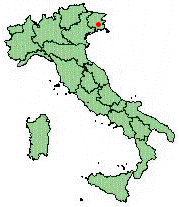ISTITUTO TECNICO INDUSTRIALE "ARTURO MALIGNANI"

The Community
Istituto Tecnico Industriale “A. Malignani” is a technical secondary school that is located in
Udine, a little city in Friuli-Venezia Giulia, a region in the north-east of Italy.
|
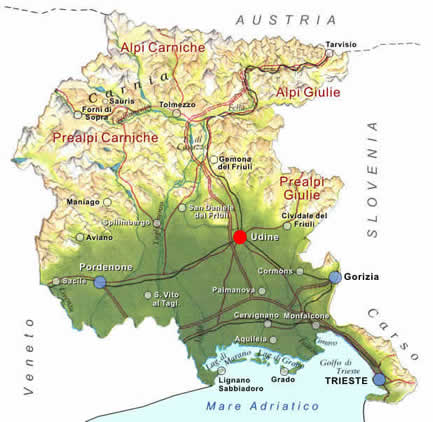 |
The school
Technical education
started in Friuli in 1866, when an evening school of drawing for craftsmen was founded. It became
a Real School of Arts and Crafts in 1879 and was later changed into a Real Professional
School, called “Giovanni da Udine“ in 1919. At the time there were various courses available, like
dressmaking, sewing, embroidery, carving, drawing, wrought iron, mathematics and even
electrotechnics. I.T.I. “A. Malignani” was founded in 1938: the school was entitled to Antonio
Locatelli, a brave Italian pilot famous for his deeds during World War One. The school was called
with its present name in 1946 (after Arturo Malignani, who was an inventor and entrepreneur in
Friuli). At present the institute occupies 120,000 cube metres of space, with classrooms for
15,000 sq. m., and workshops for 9,000 sq. m. 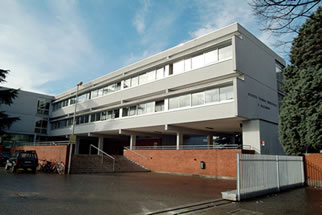 Now Malignani is one of the biggest Italian secondary
schools and is a national focal point for industry-oriented education. It has about 2,000
students who come from all over the region but also from the nearby regions where there are no
schools with the specialisation in Aeronautical Engineering. In the first two years there is a common
study plan, then in the last three years there are five specialised curricula: Aeronautical
Engineering, Building Engineering, Mechanical Engineering, Electrical Engineering and Automation,
Electronics and Telecommunications. Besides, a few years ago a new course, the Scientific and
Technological Lyceum, was started, in which, together with the academic subjects such as Italian,
English, Philosophy and Art, scientific subjects are studied, in particular Chemistry, Physics and
Computer Studies. At the end of the five years Malignani Institute offers Post Diploma, FIS, and
IFTS courses too, besides a wide partnership with international industries located in Friuli
Venezia Giulia region where students are engaged in training stages to apply their knowledge and
grow professionally.
Now Malignani is one of the biggest Italian secondary
schools and is a national focal point for industry-oriented education. It has about 2,000
students who come from all over the region but also from the nearby regions where there are no
schools with the specialisation in Aeronautical Engineering. In the first two years there is a common
study plan, then in the last three years there are five specialised curricula: Aeronautical
Engineering, Building Engineering, Mechanical Engineering, Electrical Engineering and Automation,
Electronics and Telecommunications. Besides, a few years ago a new course, the Scientific and
Technological Lyceum, was started, in which, together with the academic subjects such as Italian,
English, Philosophy and Art, scientific subjects are studied, in particular Chemistry, Physics and
Computer Studies. At the end of the five years Malignani Institute offers Post Diploma, FIS, and
IFTS courses too, besides a wide partnership with international industries located in Friuli
Venezia Giulia region where students are engaged in training stages to apply their knowledge and
grow professionally.
Istututo Tecnico Industriale "Arturo Malignani" is an ENIS school

The European Network of Innovative Schools (ENIS) is a new network of approximately 500 schools in European countries which are making use of ICT in innovative ways. ENIS is part of the European Schoolnet (EUN) and has been working since 2001. The network connects schools which are recognized as front runners when using ICT for teaching and learning, so that they may share and exchange experiences, problems and solutions and participate in collaborative projects. ENIS schools are centres of innovation and quality on both national and European level and meet specific criteria in terms of pedagogical methodology, connectivity and teachers’ training in the use of Information/Multimedia Technology. I. T. I. “Arturo Malignani” in Udine has been an ENIS school since the birth of the Italian representative in 2002 and has been involved in most of the national and international projects of the ENIS network.
Over the last years the school has focused on:
The use of ICT in the institute started in the first 1980s, when the Electronics Department decided
to choose Pascal as the high-level programming language to be used on the first network of
computers of the school. The diffusion of Commodore and Apple computers and the introduction
of IBM PCs complete with the MS-DOS operating system favoured the development of ICT: the
Apple Macintosh line was chosen by the Electronics and the Electrical Engineering Departments,
where this trend is still present. The 1990s saw the evolution of various trends: while the Mechanics
Department specialised in the use of CAD/CAM/CAE software (Autocad and
ProENGINEER), the Electrical Engineering and the Electronics specialisation promoted the
development of competence related to microchip and micro controller programming (PLC or
Programmable Logic Controller), as requested by the local industries in their process of transformation
towards industrial automation. At present the whole institute is involved in the development
of its Intranet to realise a qualified network of technical and educational resources.
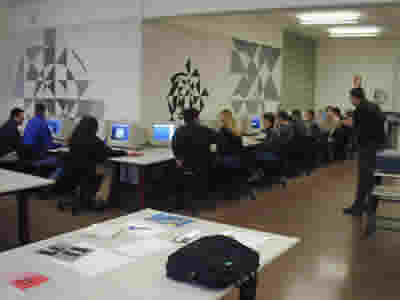
The CAD drawing laboratory of the specialisation in Mechanical Engineering
I.T.I. "A. Malignani" Institute was the first in Udine to realize an ISDN connection in 1994 and has been experimenting for many years the use of videoconference to add new tools to distance teaching and learning. We have directly verified the importance and the effectiveness of this technology in the numerous activities of exchange and cooperation with European and international schools realized in the last years. In particular, videoconference was used for the Petra project, the trilateral work of our students in cooperation with French and German ones. After a phase of common work in a very experimental Euro-class, they carried on their project at distance on ISDN video connection.
That was the very beginning: in the following years we continued using this means for various activities:
• Teacher training, in particular the training of the teachers involved in the CLIC/CLIL project;
• The management and control at distance of automation modules (Petra 2001);
• Our first experience of a "virtual classroom", where a homebound student affected by long illness managed to keep in touch with his own class and teachers.
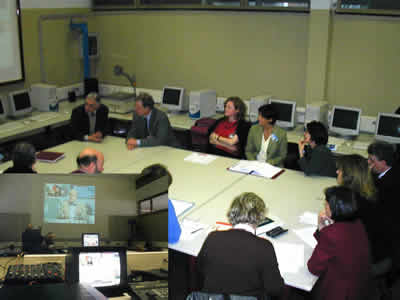 In a period in which we are experiencing the development of distance teaching with a view to lifelong learning, we think that the use of videoconference, with which it is possible to maintain a visual direct on-line contact between the learners and the teacher without losing all the irreplaceable expressive features typical of direct communication (speed of speech, length of pauses, pitch, gestures, facial expression and other body language), may be a successful tool and an alternative solution with respect to the various types of didactical software. We also think that it may find better and larger employment with the current extension of broadband connections, which make it possible to provide effective high-quality online video communication.
In a period in which we are experiencing the development of distance teaching with a view to lifelong learning, we think that the use of videoconference, with which it is possible to maintain a visual direct on-line contact between the learners and the teacher without losing all the irreplaceable expressive features typical of direct communication (speed of speech, length of pauses, pitch, gestures, facial expression and other body language), may be a successful tool and an alternative solution with respect to the various types of didactical software. We also think that it may find better and larger employment with the current extension of broadband connections, which make it possible to provide effective high-quality online video communication.
